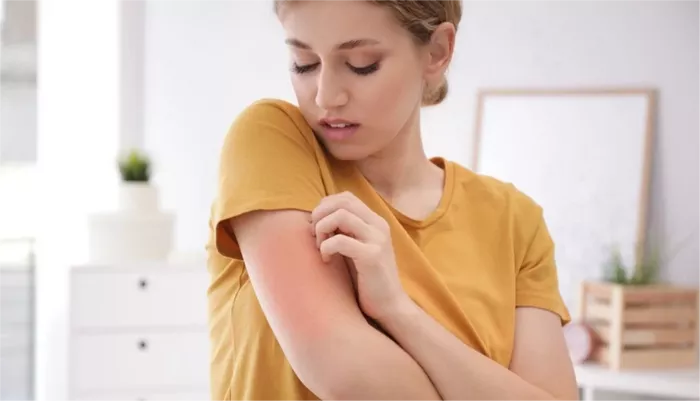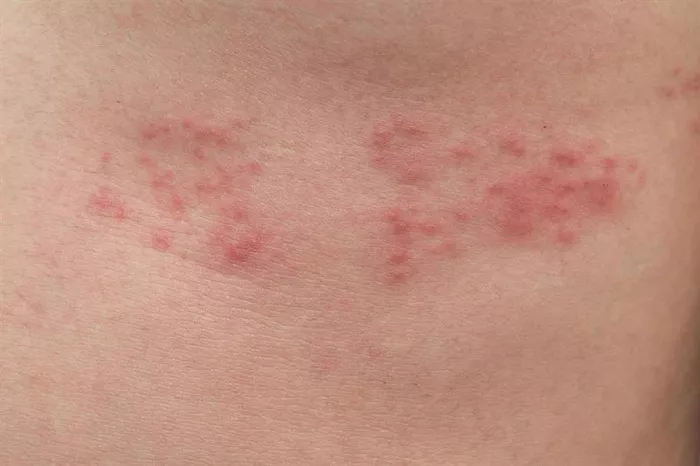Ringworm is a common fungal infection that affects the skin, hair, and nails. Despite its name, ringworm is not caused by a worm but by a fungus that thrives in warm, moist environments. It appears as a red, circular rash with a raised border, and it is often accompanied by itching. The question that many people ask is, “Does ringworm rash itch?” In this article, we will discuss the symptoms of ringworm, why it causes itching, how to treat it, and when to seek medical help.
What is Ringworm?
Ringworm is a contagious fungal infection caused by dermatophytes, a group of fungi that feed on keratin, a protein found in the skin, hair, and nails. Ringworm can affect any part of the body, but the most common types of ringworm are:
- Tinea corporis (body ringworm) – affects the skin on the body.
- Tinea pedis (athlete’s foot) – affects the feet.
- Tinea cruris (jock itch) – affects the groin area.
- Tinea capitis (scalp ringworm) – affects the scalp.
- Tinea unguium (onychomycosis) – affects the nails.
The fungal spores that cause ringworm can be found in damp areas like locker rooms, swimming pools, and on surfaces in public places. People can also catch it from infected animals, especially pets like cats and dogs.
Why Does Ringworm Rash Itch?
One of the most noticeable symptoms of ringworm is itching. The itching occurs because the body’s immune system reacts to the fungal infection. When the fungus invades the skin, it triggers an immune response, which causes inflammation. The inflammation results in itching and discomfort, which is often worse when the rash is left untreated.
The itching can vary from mild to severe, and it may come and go throughout the day. It can be particularly bothersome at night, which may interfere with sleep. The severity of the itch depends on the location of the infection and how long it has been present. The rash can sometimes cause skin irritation and soreness, which can worsen the itching.
Symptoms of Ringworm Rash
The rash caused by ringworm is typically red and circular, with a raised, scaly border and a clear center. The center of the rash may appear normal or slightly lighter than the surrounding skin. Over time, the rash can grow larger, and the edges may become more defined. In some cases, the rash can spread to other parts of the body.
Aside from the characteristic ring-shaped rash, other common symptoms of ringworm include:
- Itching – The skin around the rash may itch or burn.
- Redness – The infected area of the skin becomes red and inflamed.
- Scaling – The rash may become scaly or flaky as the fungus spreads.
- Blisters or pustules – In some cases, small blisters or pustules may form on the rash.
- Hair loss – If the infection affects the scalp (tinea capitis), it may cause hair to fall out in the affected area.
It is important to note that the severity of these symptoms can vary depending on the type of ringworm and the individual’s immune system. In some cases, people may experience mild itching, while in others, the itch can be intense.
How to Relieve Itching from Ringworm
Although the itch caused by ringworm can be bothersome, there are several ways to manage it. Here are some tips to help relieve the discomfort:
1. Topical Antifungal Creams
Over-the-counter antifungal creams, powders, or sprays are the most common treatment for ringworm. These products contain active ingredients such as clotrimazole, miconazole, or terbinafine, which work to kill the fungus and stop its growth. When applied to the affected area, these antifungal treatments can help reduce itching and inflammation. It is important to follow the instructions on the packaging and continue using the medication for the recommended duration, even if the symptoms start to improve.
2. Keep the Skin Dry
Fungi thrive in warm, moist environments. Keeping the affected area dry can help prevent the fungus from spreading and reduce itching. After washing the affected area, make sure to dry it thoroughly, especially in areas where moisture can accumulate, like between the toes or in skin folds. You can also use an antifungal powder to keep the skin dry and prevent further irritation.
3. Avoid Scratching
While it may be tempting to scratch the itchy rash, scratching can worsen the condition by causing further irritation and potentially introducing bacteria to the area. Scratching can also spread the infection to other parts of the body. If you find it difficult to resist the urge to scratch, you can apply an ice pack or a cold compress to the affected area to numb the skin and reduce the itching.
4. Use Calamine Lotion
Calamine lotion is another option to soothe the itching and discomfort associated with ringworm. It has a cooling effect that can provide temporary relief from itching. Apply calamine lotion to the affected area several times a day to help reduce irritation.
5. Avoid Tight Clothing
Tight clothing can trap moisture and heat, making the itching worse. Wearing loose-fitting clothes made from breathable fabrics, like cotton, can help keep the skin cool and reduce irritation. This is especially important if the infection is located in areas like the groin or underarms.
6. Take Oatmeal Baths
An oatmeal bath can help soothe itchy skin. Oatmeal contains compounds that have anti-inflammatory properties, which can help calm the skin and reduce itching. You can add colloidal oatmeal to a warm bath and soak for 15–20 minutes to relieve the itching. Make sure to dry the skin gently afterward.
When to Seek Medical Attention
Most cases of ringworm can be treated with over-the-counter antifungal treatments. However, there are times when it is important to seek medical attention. You should consult a healthcare provider if:
- The rash does not improve after using over-the-counter treatments for 2–4 weeks.
- The infection spreads to other parts of the body or becomes more severe.
- The skin becomes swollen, painful, or develops blisters.
- You experience a fever or other signs of infection.
- The infection affects your scalp and causes hair loss, as this may require oral antifungal medication.
A healthcare provider can prescribe stronger antifungal medications or may recommend further treatments, depending on the severity and location of the infection.
Preventing Ringworm
Since ringworm is highly contagious, it is important to take steps to prevent it from spreading to others. Here are some tips for prevention:
- Keep your skin clean and dry. Wash your body regularly with soap and water, and dry thoroughly, especially in areas that are prone to moisture.
- Avoid sharing personal items. Do not share towels, clothing, shoes, or sports equipment with others.
- Wear shoes in public places. To avoid athlete’s foot, wear shoes in places like locker rooms and swimming pools.
- Treat pets for ringworm. If you have pets, make sure to check them for ringworm, as they can spread the infection to humans. Take them to the vet for treatment if necessary.
- Wash bedding and clothes regularly. If you or someone in your household has ringworm, wash sheets, towels, and clothing in hot water to kill any fungal spores.
Conclusion
In conclusion, ringworm does cause itching, and the severity of the itch can vary depending on the individual and the location of the infection. Itching occurs as a result of the body’s immune response to the fungal infection. While the itch can be uncomfortable, there are several ways to manage it, including using antifungal creams, keeping the skin dry, and avoiding scratching. If the condition worsens or does not improve with treatment, it is important to seek medical attention.
By following proper treatment and prevention methods, you can manage ringworm effectively and reduce the risk of it spreading to others. Always take care of your skin and consult a healthcare provider if you have concerns about any skin condition.
Related topics:

























